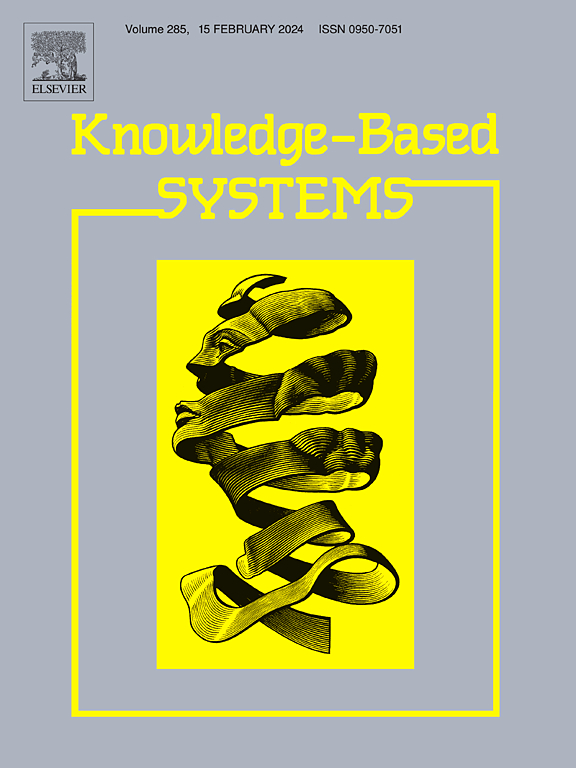半概念和概念表征
IF 7.2
1区 计算机科学
Q1 COMPUTER SCIENCE, ARTIFICIAL INTELLIGENCE
引用次数: 0
摘要
在 FCA 中,我们经常要处理的形式语境 K=(G,M,I)只是部分已知的,即只有属于可观测集合 N⊂M 的属性是已知的。对象集 G 中还必须有一部分 H(称为训练集)由所有属性都已知的元素组成。K 的概念必须使用与训练对象集 H 和可观测属性集 N 相对应的子上下文来确定。在我们的论文中,这个问题将在原始上下文的半概念扩展框架内进行研究,原始上下文的半概念是其概念的概括。原始语境的每个半概念都会在两个子语境中产生一个半概念。这样,上下文的每个半概念都由一对诱导的半概念来表示,这些半概念也可以被视为其近似值--就像粗糙集一样。我们描述了由这种表示法定义的映射的属性,并证明了由这些半概念对形成的正集是两个完整网格的联合。我们证明,这些诱导半概念对可以通过使用简化表示法生成。由于半概念的数量会随着训练集和可观测属性集的大小呈指数增长,因此我们还提出了一种算法,用于选择支持度和相关度达到一定阈值的表征对。本文章由计算机程序翻译,如有差异,请以英文原文为准。
Semiconcept and concept representations
In FCA, we often deal with a formal context that is only partially known, i.e. only the attributes that belong to an observable set are known. There must also exist a part of the object set – called a training set – that consists of elements with all attributes known. The concepts of have to be determined using the subcontexts corresponding to the training object set and to the observable attribute set . In our paper, this problem is examined within the extended framework of the semiconcepts of the original context, which are generalizations of its concepts. Each semiconcept of the original context induces a semiconcept in both subcontexts. In this way, each semiconcept of the context is represented by an induced pair of semiconcepts, which can also be considered its approximations — as in the case of rough sets. We describe the properties of the mapping defined by this representation and prove that the poset formed by these semiconcept pairs is a union of two complete lattices. We show that these induced semiconcept pairs can be generated by using a simplified representation of them. As the number of semiconcepts grows exponentially with the size of the training set and the observable attribute set, an algorithm that selects the representation pairs for which their support and relevance reach a certain threshold is also presented.
求助全文
通过发布文献求助,成功后即可免费获取论文全文。
去求助
来源期刊

Knowledge-Based Systems
工程技术-计算机:人工智能
CiteScore
14.80
自引率
12.50%
发文量
1245
审稿时长
7.8 months
期刊介绍:
Knowledge-Based Systems, an international and interdisciplinary journal in artificial intelligence, publishes original, innovative, and creative research results in the field. It focuses on knowledge-based and other artificial intelligence techniques-based systems. The journal aims to support human prediction and decision-making through data science and computation techniques, provide a balanced coverage of theory and practical study, and encourage the development and implementation of knowledge-based intelligence models, methods, systems, and software tools. Applications in business, government, education, engineering, and healthcare are emphasized.
 求助内容:
求助内容: 应助结果提醒方式:
应助结果提醒方式:


